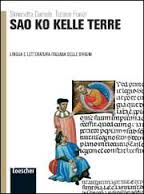Anyway, almost all of the Italian vocabulary comes from Latin, but the Italian language has also assimilated many words of the languages of the non-Italic peoples that have dominated Italy over the centuries. The Italian has taken words from Germanic, Arabic, Spanish and French languages. Now the Italian linguistic territory also includes the Canton Ticino, Nice and some area of Dalmatia.
Many dialects continue to be spoken In Italy, which may be divided into different groups.

1) The Northern dialects are spoken in Piedmont, Lombardy, Liguria and Emilia Romagna, where traces of the ancient Celtic language are visible.
2) Many dialects have remained distinct such as the Venetian and Tuscan dialects that are connectable with the dialects of Corsica. The Venetian dialect is spoken in Istria, Dalmatia and Tirol.
3) We will also consider the Central and Southern dialects, such as north Sardinian, Umbrian, Roman and Tuscan dialects. Literary language in Italy developed by the Florentine dialect.